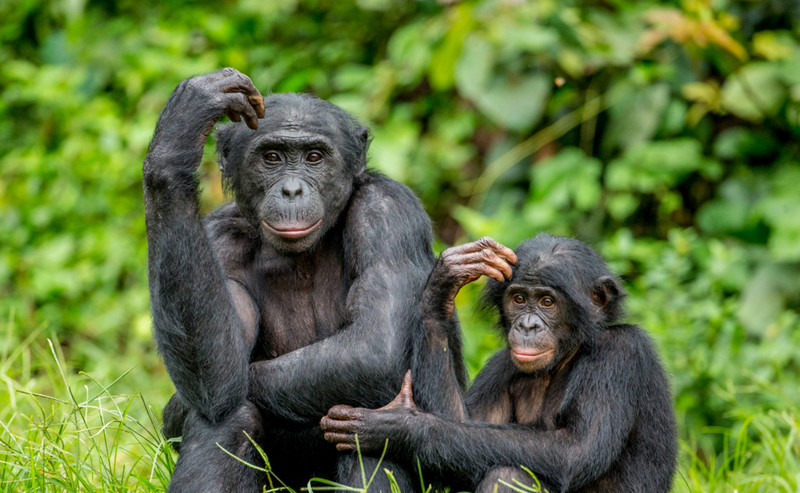innovuscollege.com – Bonobos, often referred to as “pygmy chimpanzees,” are one of our closest relatives in the animal kingdom, sharing approximately 98.7% of their DNA with humans. These remarkable primates are not just fascinating from a genetic standpoint; they also exhibit a range of unique behaviors that set them apart from other species, particularly their more aggressive relatives, the common chimpanzees.
Social Structure and Community
Bonobos are primarily found in the dense rainforests of the Democratic Republic of Congo. They live in matriarchal societies, where females typically hold the highest social status. This female-led hierarchy plays a crucial role in the bonobo’s unique behavioral patterns. The close bonds among females contribute to a more peaceful and cooperative community compared to other primate groups.
Conflict Resolution through Sexual Behavior
One of the most intriguing aspects of bonobo behavior is their use of sexual interactions to resolve conflicts. Rather than resorting to aggression, bonobos often engage in sexual behaviors—ranging from genital rubbing to more explicit forms of mating—whenever tensions arise. This behavior serves multiple purposes, including reinforcing social bonds, reducing stress, and ensuring group cohesion.
This approach to conflict resolution highlights bonobos’ emphasis on social harmony. Their sexual interactions are not solely for reproduction; they also play a vital role in maintaining peaceful relationships within the group.
Playfulness and Affection
Bonobos are known for their playful nature. They engage in various forms of play, from chasing and wrestling to elaborate games that involve vocalizations and social signals. This playfulness extends into adulthood, where sexual play can be a common sight among individuals, further emphasizing their relaxed approach to social interactions.
Physical affection is also crucial in bonobo societies. Grooming is a significant behavior, as it helps strengthen social bonds and establish hierarchies. Bonobos often groom one another as a way to communicate care and affection, which fosters a sense of community and belonging.
Tool Use and Problem Solving
While bonobos are not as renowned for tool use as their chimpanzee relatives, they have demonstrated impressive problem-solving skills. In controlled settings, bonobos have been observed using sticks to retrieve food or manipulating objects to achieve a goal. This ability to innovate and adapt showcases their intelligence and reflects their capacity for learning.
Conservation and Future
Bonobos face numerous threats, including habitat destruction, poaching, and the illegal wildlife trade. Conservation efforts are crucial to ensure their survival, as they are classified as endangered. Organizations are working to protect their natural habitat and raise awareness about the importance of bonobos in the ecosystem.
Conclusion
Bonobos are not just another species of great ape; they represent a unique approach to social interaction, conflict resolution, and community living. Their peaceful behaviors, strong social bonds, and intelligence provide invaluable insights into the evolution of social structures in primates, including humans. Understanding and protecting bonobos is essential, not only for their survival but also for the lessons they can teach us about cooperation, empathy, and community.





